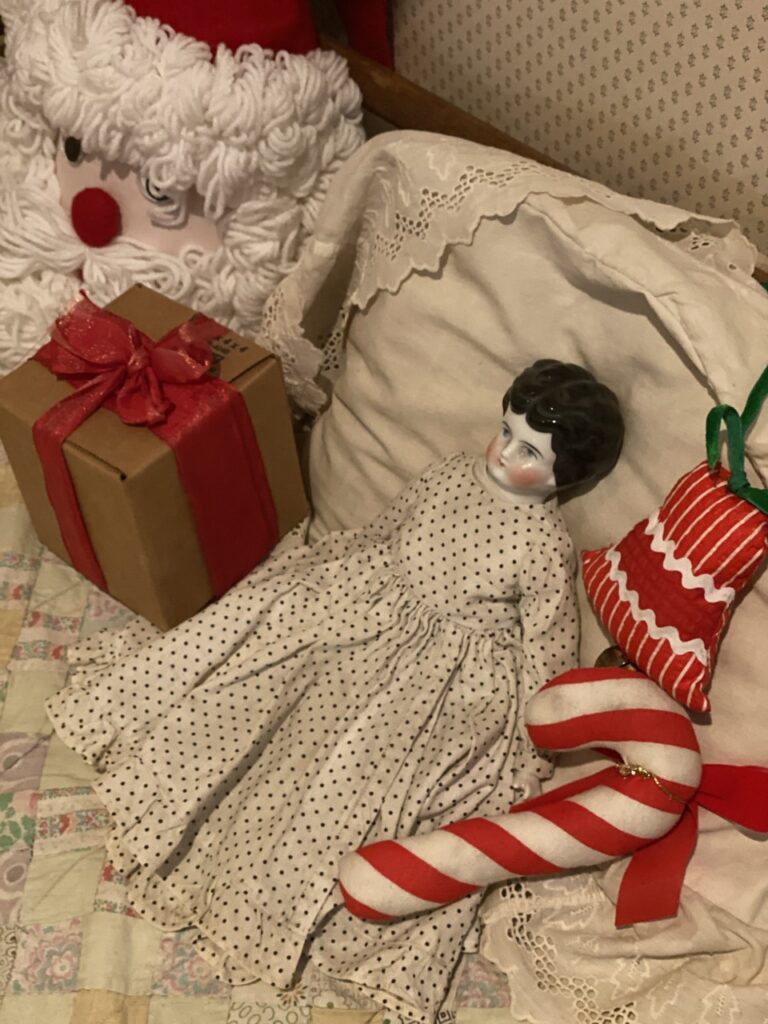Victorian Life
The Ultimate Victorian Christmas Gift
Tis’ the season again, and time to select the perfect Christmas gift for your special someone or child. Will it be diamonds, a luxury car, a fully furnished Barbie dollhouse? What will be your ultimate luxurious gift? For wealthy Victorians this question was a no-brainer. They would shop for the most expensive and beautiful porcelain doll available – perfect for ladies of any age.
In the 17th and early 18th centuries, children were seen as basically sinful and in need of very specific guidance. Spare the rod and spoil the child “ was the motto of the day. Play was only useful if it built good habits.
This rigid and moralistic stance softened in the 1800s when the Romantic poets like William Wordsworth looked upon childhood as a time of innocence and purity. Children were painted with rosy cheeks and corkscrew curls. However, the children of the poor and working class families – those same children who worked in the mines, textile factories and other developing industries – were excluded from this rapturous scenario. Thus, costly toys were created only for the wealthy. Lavish porcelain dolls dressed in velvet and lace fostered conspicuous consumption. These dolls were also a model of the latest fashions, so they had to be constantly kept up to date in their attire. This served as a sort of dress rehearsal for womanhood and shopping! Even the emerging middle class with their boost in income due to the Industrial Revolution were eager to emulate the wealthy elites and sought to buy dolls.
The Gilded Age, beginning in the mid-1870s, also gave rise to an explosion of new shopping venues, including mail-order catalogs. The huge increase in toy buying during the Christmas season morphed into a national American holiday complete with a Santa Claus theme. Porcelain dolls took over the market!
Porcelain, originally brought from China in the 1400s, was considered to be for the refined, privileged and wealthy. The level of materialism was never about necessity. Since the head was the most visible part of the doll, it was the part made of porcelain – unglazed bisque which was fired to give it a more lifelike finish, which could be painted. The bodies, hidden under the clothes were made of kid leather or a mixture of sawdust and glue.
The fragility of these dolls was part of the appeal, since giving it to a child who might break it during play was a declaration that you had sufficient funds to quickly replace it. These dolls even reflected the social norms of the wealthy, as exemplified when they emerged in miniature mourning gowns and veils when Queen Victoria’s husband died. Victorians believed that death and grief were facts of life, so that playing with a doll dressed in mourning was another chance to do a practice run before having to experience the real thing!
Porcelain dolls continue to be produced today even though more practical and sturdier materials are available. This speaks to their value as something to be prized. Many of the antique dolls preserved from Victorian times now populate our museums, where they continue to be significant exemplifiers of social class and wealth and Christmases long ago.
Sandee is the Historian/Lead Tour Guide of the Davis-Horton House Museum. She can be reached at [email protected].

